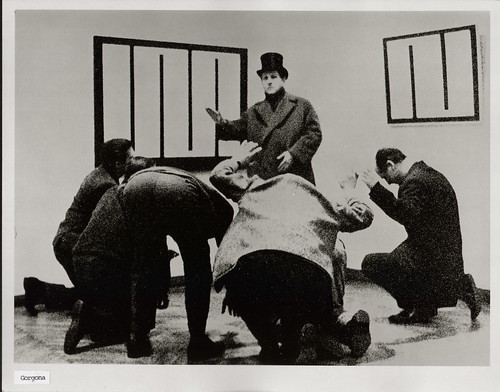Gorgona
“Gorgona seeks neither work nor result in art”
J. Vaništa, 1961
The Gorgona group (named after a a poem by Dimitrije Bašičević) was a Croatian avant-garde art collective that operated in Zagreb between 1959 and 1966. Its members were artists Marijan Jevšovar, Julije Knifer, Đuro Seder, Josip Vaništa, Ivan Kožarić, Miljenko Horvat, as well as theoreticians Dimitrije Bašičević Mangelos, Radoslav Putar and Matko Meštrović. Several informal and conceptual international artists were also involved in the group’s activities.
As Nena Dimitrijević - the first art historian to study the group - said, Gorgona wasn’t an artistic group in the usual sense, based on a common art ideology, and each one of the artists maintained a complete creative autonomy. Towards different declinations, Gorgona explored the “dematerialization” of the work of art, in line with the parallel researches of Fluxus, Zero Group, New Tendencies (and often in collaboration with this artists).
Its activities included exhibitions organized in the “Studio G” (a picture-framing shop, used as an space independent space), which included shows of the members of the group and also of other informal and conceptual artists such as Eugen Feller, Pietro Dorazio, Victor Vasarely; meetings and projects developed without the goal to “produce” an art work; and the publication of an “anti-review”, named Gorgona, published in eleven numbers. Each one of them was completely designed by an artist: Josip Vaništa (n. 1, 1961), Julije Knifer (n. 2, 1961), Marijan Jevšovar (n. 3, 1961), Victor Vasarely (n. 4, 1961), Ivan Kožarić (n. 5, 1961) Josip Vaništa (n. 6, 1961), Milijenko Horvat (n. 7, 1965), Harold Pinter (n. 8, 1965), Dieter Rot (n. 9, 1966), Josip Vaništa (n. 10, 1966), Josip Vaništa (n. 11, 1966). Several numbers remained unrealized, and only documents and sketches remains of the works of Ivan Čižmek, Lucio Fontana, Ivo Gattin, Ivan Kožarić, Mangelos, Piero Manzoni, Enzo Mari and Đuro Seder.
The Gorgona archive is now preserved at MSU Zagreb and the materials have been digitized with the Digitizing Ideas project.

